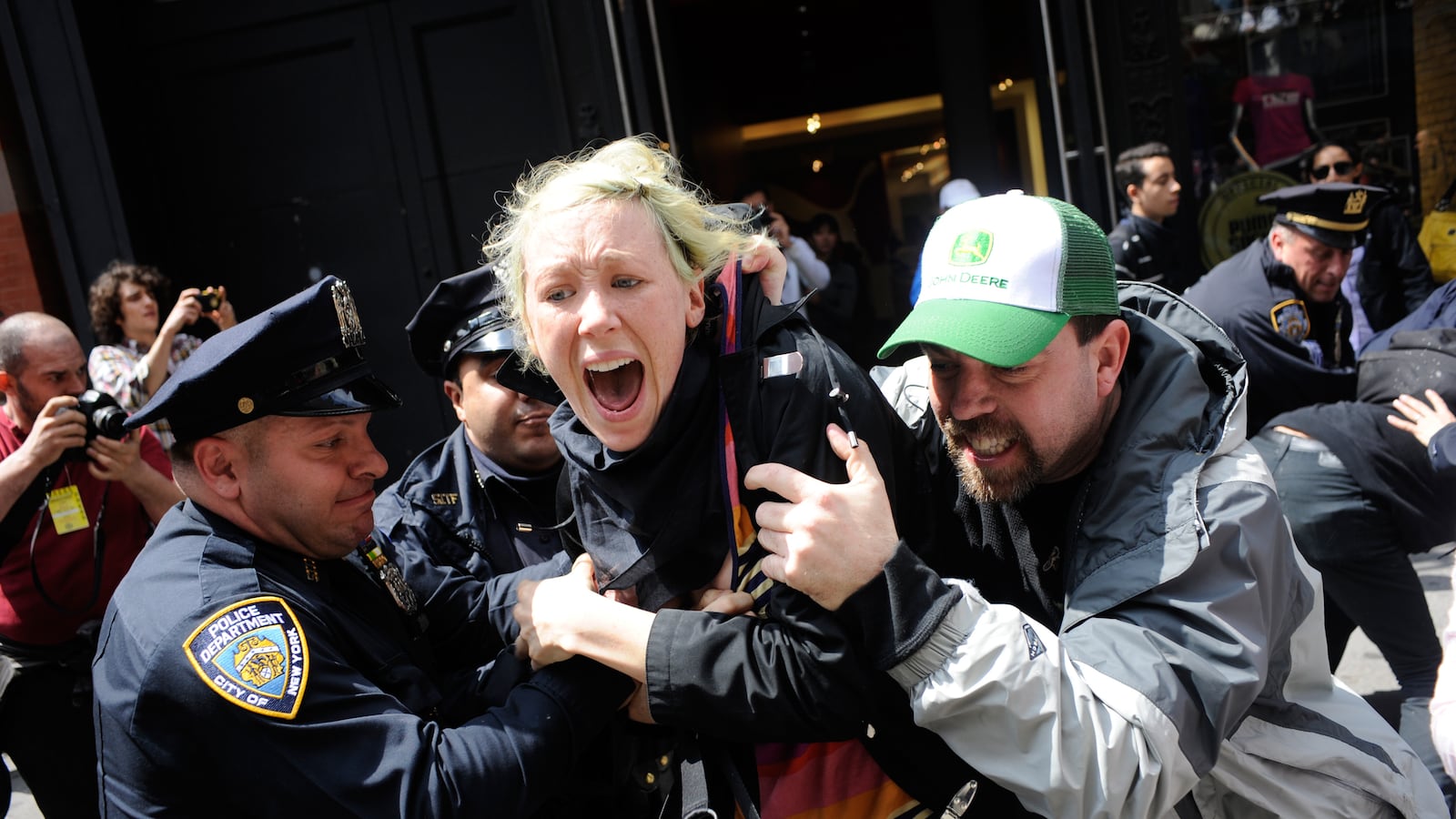Nearly two years after the first Occupy Wall Street protesters set up camp in Zuccotti Park in lower Manhattan, there are few signs that a worldwide protest movement started here. The sleeping bags and makeshift kitchens are long gone, and the investment bankers that had to skirt the masses to get into their offices now enjoy lunch in the park.

But the debate over Occupy Wall Street’s legacy is very much alive.
In New York, the city where the movement took off, there’s currently a mayor’s race where issues of inequality first raised by OWS are being hotly debated. The current frontrunner in the Democratic primary, Bill de Blasio, is running on the campaign slogan “New York is a tale of two cities.”
And now a new documentary about the movement, 99%: The Occupy Wall Street Collaborative Film, is sure to spark even more questions on what Occupy means two years later.
“Was it just a learning experience or something more?” asks Audrey Ewell, one of the filmmakers. “Societal change can be abstract. Sometimes it’s visible, and sometimes it’s not.”
The film opens with a speech by President Obama, decrying inequality as “the defining issue of our time,” foreshadowing his recent declaration that he will dedicate the rest of his presidency to closing the growing gap between rich and poor.
The film, which debuted at Sundance and is filled with previously unreleased footage from Occupy protests around the country, premieres in New York and Los Angeles on Friday.
99% shows a highly varied account of what happened during the heady months of late 2011, culling footage from over 100 people, professionals and amateurs, who took video of Occupy from New York to Oakland and points in between.
The result is a comprehensive look at Occupy from start to sort-of finish, bracketed by the first days when a few people camped out in Zuccotti Park to a dystopian finale showing the last protesters being removed from the park on New Year’s Eve.
The film is not unlike Occupy itself—fascinating, intensely photogenic, frenzied, and occasionally maddening. 99%’s narrative is anchored by the real-life dramas of people hit hard by the 2008 financial crisis. There’s Monique, a Minnesota woman whose family home was threatened with foreclosure, and who asked local Occupy protesters to stage a sit-in at her house in the middle of a snowstorm to prevent foreclosure.
There were also the many newly unemployed residents of Jackson, Mississippi, many of them with families, who found themselves having to line up at a local soup kitchen for meals after suddenly losing their jobs. Members of Occupy Jackson volunteered at the soup kitchen.
But like the movement it portrays, the film has a short attention span, jumping from the student loan crisis to the militarization of the police to subprime mortgages, often in the space of a few minutes. The filmmakers obviously want to make their coverage comprehensive, but it’s sometimes just confusing.
Ewell acknowledged the struggle to create narrative out of what sometimes looked like chaos.
“It’s hard to look at the individual pieces and see how they tie together,” she says. “That’s why Occupy struggles. People thought it was just noise.”
99% is chock-full of interviews with some of the key players and critics of Occupy—from activist Naomi Wolf to Jason Ahmadi, the protester who initiated the now-famous “human mic” at Zuccotti. Despite access to Occupy insiders, the filmmakers, Ewell and Aaron Aites, say they aren’t part of the Occupy movement.
Ewell says her interest in making a documentary about Occupy was sparked on October 1, 2011, when 700 protesters were arrested for marching across the Brooklyn Bridge.
“The mainstream media was not covering it in a way I was comfortable with,” she says. “It felt like such a big moment, and I didn’t think the truth was being reported.”
Aites said he was inspired by a conversation he had with his mother when Occupy was beginning to make headlines. “When I was trying to explain to my mom what Occupy was, she was having a really difficult time understanding it. We wanted to show the micro and macro elements so that anyone could watch our film and understand what happened.”
Ewell and Aites say Occupy’s long-term influence remains to be seen, but that there are still more questions than answers.
“There were a lot of people that made connections and learned to organize, leading to offshoot movements like Occupy Sandy,” Aites says, referring to the team of volunteers that helped New Yorkers in the wake of Hurricane Sandy.
“We were at a film festival in Poland and talked to one man who said he thought the movement was successful because the barricades on Wall Street that went up after Occupy showed how separate Wall Street is from the rest of the city,” Ewell says.
“He told us, ‘Once power is made visible, it cannot retain its control. It’s only a matter of time.’”






